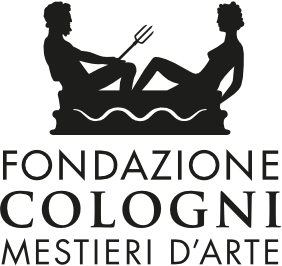Generative Sparks
When Doppia Firma made its debut three years ago, the theme of the “craft design” – that is, the artisanal production of inspiring objects, perfectly fitting a contemporary taste – was just one of the numerous trends in a crowded creative scene. Now it has become one of the most interesting sources of design innovation. And more and more frequent are the cases of designers who choose to experiment with precious manual techniques for the expressive possibilities they offer.
Doppia Firma represents another step forward: the work of master craftspeople – this time chosen in the territory of the Veneto Region – is in fact not limited to translating a concept into reality. It’s the starting point of an experimental process, developed side-by-side with the designers and the outcomes of which are always original and unpredictable. The geometric brocade born from the encounter between Nathalie Du Pasquier and the time-honoured Bevilacqua weaving atelier; the three-dimensional intarsia crafted by Morelato for the cabinet imagined by Lebanese designers david/nicolas; Studio Swine’s whimsical table set sculpted in silver by master goldsmith Giampaolo Babetto – these are just a few examples of how the spark of innovation has ignited the artisanal workshops.
“The Doppia Firma project contributes to raise the quality of design, because it allows us to follow carefully and personally every phase of the production process,” reveals Dutch designer Kiki van Eijk, authoress – together with the Berta Battiloro atelier – of a series of centrepieces in marble gilded in gold leaf. Her words perfectly sum up the synergetic formula of Doppia Firma: a bridge between past and future that gives a contemporary allure to those celebrated métiers d’art which are internationally acknowledged as one of Italy’s competitive advantages.
So, enter creative artists the likes of India Mahdavi, Giampiero Bodino and Erik Spiekermann: they have revealed new sides of lace-making, silk-printing, and artistic typography. While young talented designers like De Allegri and Fogale, Ini Archibong, Inma Bermúdez, Philippe Tabet, Pepa Reverter, and Serena Confalonieri, with their cosmopolitan vision have reinterpreted traditional materials and productive techniques – from mouth-blown glass to tricot, from porcelain and papier-mâché to glass mosaic. The spark that ignited when the 13 designers, hand-picked by Living Corriere della Sera, encountered the knowhow of the ateliers selected by the Cologni Foundation, thanks to the invaluable support of the Michelangelo Foundation for Creativity and Craftsmanship, has brought about the creation of a collection of objects that express creative invention along with artisanal virtuoso dexterity. And this is a perfect demonstration of a beautiful paradox: that a solid tradition is the best basis for ushering in the future.


